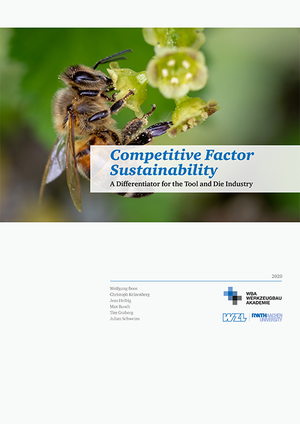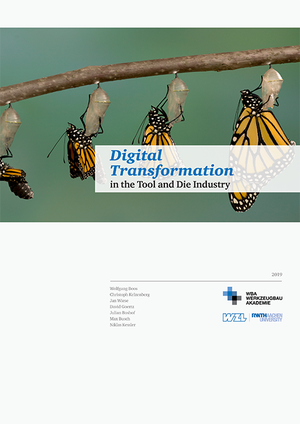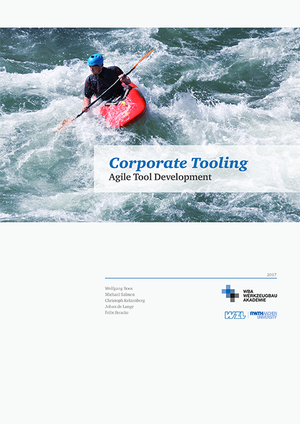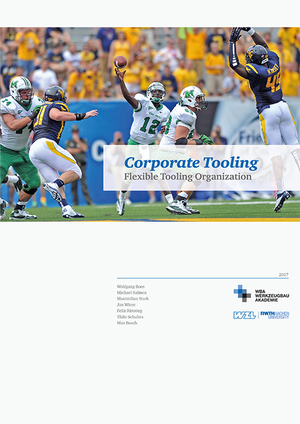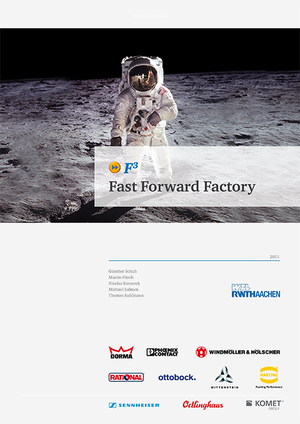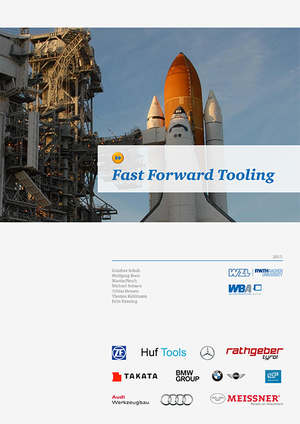our studies
2020
Competitive Factor Sustainability
The study "Competitive Factor Sustainability – A Differentiator for the Tool and Die Industry" addresses exactly this issue and presents a target picture of sustainable tool and die making with fields of action in the dimensions of service portfolio, resources, process and employees. Within these dimensions, practical impulses are given and a guideline for the self-conduction of a sustainability audit is also presented.
2019
Digital Transformation in the Tool and Die Industry
The digital transformation is a central lever for optimizing the value creation of services and offering new product-service-systems. Despite its enormous potential, the German tool and die industry currently has no systematic approach to harness the data available in companies and thus to exploit the potential that actually exists. The guideline „Digital Transformation in the Tool and Die Industry“ provides recommendations for action not only for the creation of data-based product-service-systems but also for data data-based product-service-system provision. In addition to the description of a systematic approach including the instruments to be used, the content is presented in detail by means of a Use Case and various topic-related excurision chapters.
2017
Agile Tool Development
In order to become partners who treat each other as equals, the tool and die industry needs to fulfill three central elements on the path to „Corporate Tooling“. The first element is agile tool development, which integrates itself into the customer‘s product development process at an early stage with a coordinated product and service spectrum. For this purpose, agile methods are used in tool and die development processes for successful project and process management.
2017
Flexible Tooling Organization
In order to become partners who treat each other as equals, the tool shop needs to fulfil three central elements on the path to “Corporate Tooling”. The first element is agile tool development, which integrates itself into the customer’s product development process at an early stage with a coordinated product and service spectrum. For this purpose, agile methods are used in the tool development processes for a successful project and process management. The second element is intelligent tool manufacturing, which describes the operative implementation of industry 4.0 applications in order processing. These include digitally supported employee management, digital order and resource management as well as human-machine interaction. The third element is the flexible tooling organization, which has both flexible and clearly defined organizational structures. The organization’s task is to use algorithms to make existing knowledge available throughout the entire tool shop and to promote networking with external partners at the same time.
2015
Fast Forward Factory
Manufacturing companies also need to be in a position to master the art of faster, better, further. Specifically, they have to arrange their value creation process more efficiently. This allows them to survive in competition, and to continue developing their products in the long term. Lean Thinking has provided a useful formula for this. The up-and-coming Industrie 4.0 age now offers a new, fast infrastructure, and fundamentally changes people‘s behaviour. But what benefits can Industrie 4.0 bring? How does that fit in with my target system, my industry, my company?
2015
Fast Forward Tooling
The tool making industry is the central enabler of a powerful serial production and therefore significantly responsible for innovations. Fast Forward Tooling – tool making of the future! Serial producers and tool making companies alike must deal with the nine success factors in the sectors of product, process and resources. The design of these factors of success enables a future-oriented and efficient added value in the tool making industry.
